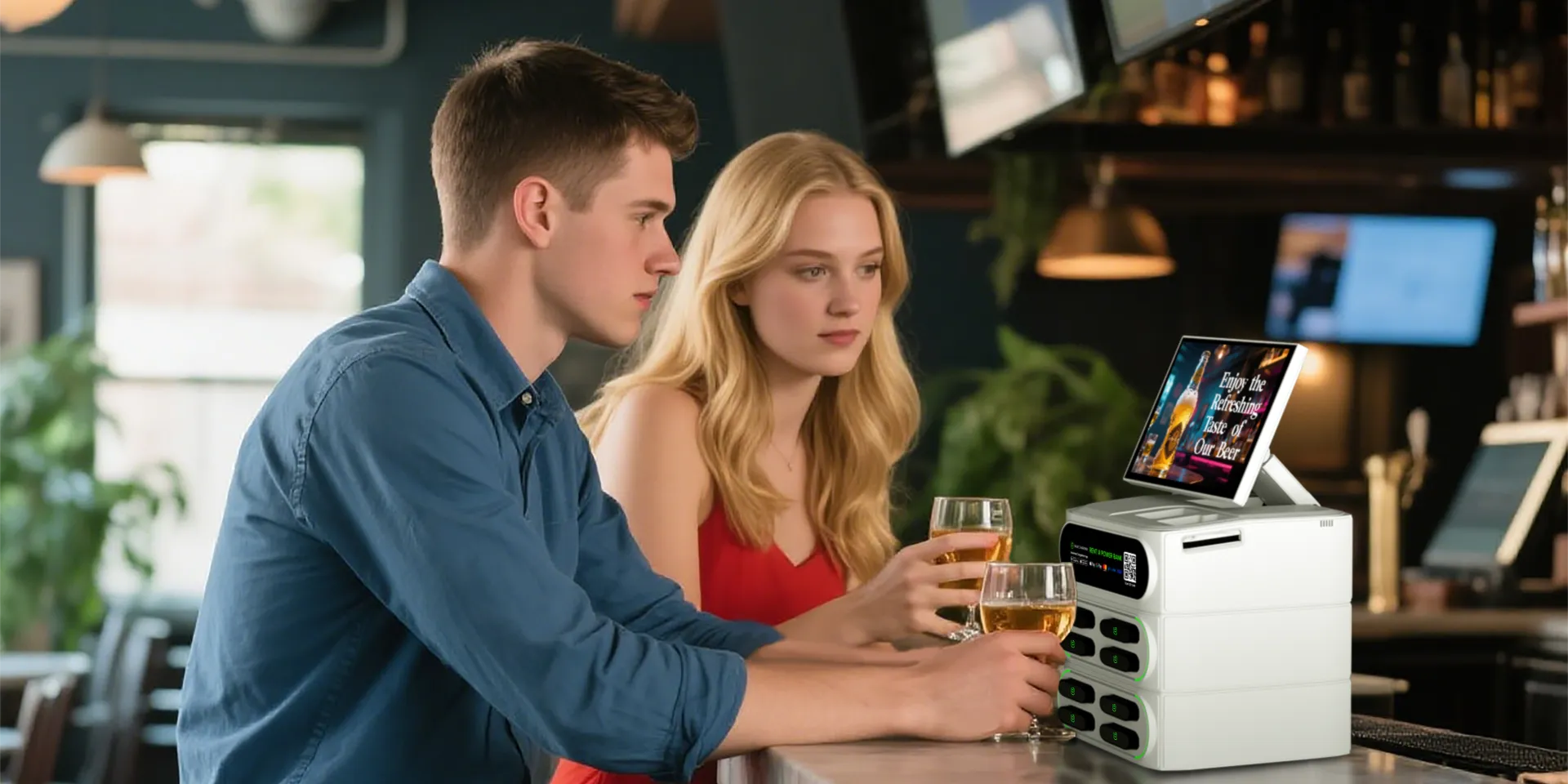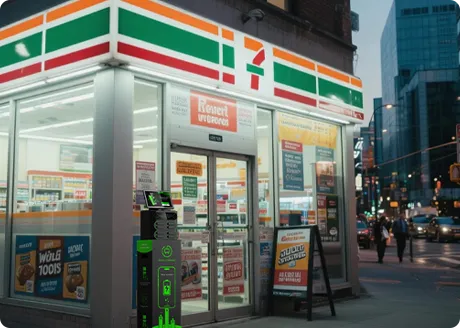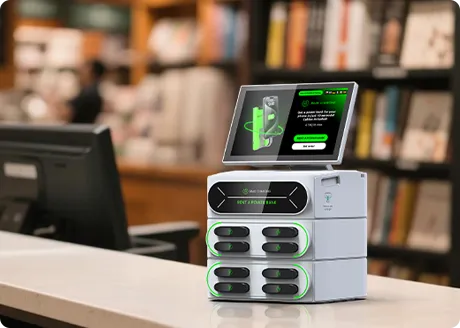How can phone charging station generate advertising revenue for investors?
Shared power banks are generally placed in commercial areas, public service areas, residential areas, and other high-traffic locations, and are gradually expanding into transportation hubs, entertainment venues, and more scenarios to meet users’ charging needs in different environments. However, the role of the LED display on shared power banks is often overlooked. In addition to guiding users to rent, the LED screen can also display product promotions/brand advertisements, providing businesses with brand exposure and offering investors an opportunity to earn advertising revenue.
1. Why place ads on shared power bank screens? What is the purpose?
A shared power bank with a screen is equivalent to a multifunctional advertising machine. When users rent a shared power bank, their attention is naturally drawn to the screen and its advertising content.
The ads can include limited-time discounts, new product launches, etc., which attract users to make purchases. Detailed brand information such as address, business hours, and contact information can also be added to the ads, helping users quickly find the destination. These ads are usually promotions from nearby stores/brands, located within close distance, making it convenient for users to participate in events.
Investors can earn advertising revenue by placing brand ads. Advertising services of shared power banks can also be used as a cooperation strategy for entering popular venues. Investors provide free ad display for bars, shopping malls, etc., allowing shared power banks to be placed at these venues for free. This creates a win-win partnership, accelerates network expansion of shared power banks, and improves investors’ market share in the local area.

2. What types of ads can be shown on shared power bank screens? Images, videos, and audio
Shared power banks come with 10.1/23.8/43/55-inch advertising screens, which can display image ads, video ads, or audio ads. Content can be customized.
Image ads: Commonly used to display brand promotions, discount offers, or local business deals. The rotation frequency can be customized.
Video ads: Support 4G network/WiFi for playing dynamic ads, providing multi-angle and comprehensive product displays. Suitable for in-depth brand promotion or product marketing.
Audio ads: Broadcasted via built-in speakers, giving detailed explanations or supplementary information for video ads. Often combined with video ads to enhance effectiveness.
Through the ad screens, businesses can publish discount offers (e.g., restaurant promotions), event notices (e.g., music festival ads), or public service content (e.g., environmental protection campaigns), creating a promotion channel for businesses/brands.
3. How to place ads on shared power bank screens?
Generally, ads are placed remotely through the shared power bank technology platform. For those with customized shared power bank software systems, ads can be set directly in their management backend.
Merchants can provide ad materials that meet screen specifications and file requirements, or request the technology platform to design customized ad content in image, video, or audio format. The platform then pushes the ad to the shared power bank screens, enabling remote ad updates and management.
For merchants with customized software systems, they can directly upload ad materials through the backend, set playback times, sequence, rotation intervals, and frequency. The backend system will automatically distribute the ad content to the designated shared power bank screens and play according to the preset parameters.
4. Can shared power banks display investors’ own ads and also charge others for ads?
Yes. The ad screen of shared power banks can display investors’ own ads, and investors can also cooperate with shops, restaurants, and other venues to place shared power banks for user convenience. At the same time, they can generate revenue by showing ads in these locations or offering ad space rental services.
For example, in convenience stores or restaurants near office areas, ads can display updated menus for different times of the day, making it easier for customers to choose. They can also promote new dishes or products, dynamically update menus, attract more customers, and boost store revenue.
This enables brands to deliver precise, scenario-based ads, with ad content automatically switching for morning, noon, and evening. Ad pricing is adjusted reasonably according to the location and duration of placement. Single-machine ads and multi-machine ads can be differentiated in placement and pricing, achieving flexible ad management.
Summary
The shared power bank technology platform can flexibly adjust ad display formats to meet advertising needs across different scenarios, allowing investors to earn additional ad revenue.
When users urgently need charging, the high traffic and focused attention provide an opportunity to display ads through multiple channels such as the app interface and device screen. Platforms can analyze user borrowing and returning behavior to achieve targeted advertising, efficiently delivering ad content to the most potential consumer groups, thereby enhancing ad effectiveness and investors’ return on investment.
September 4, 2025
 How does cross-location power bank return help investors better expand their mobile phone charging station business?
How does cross-location power bank return help investors better expand their mobile phone charging station business?
 How can a touch screen cell phone charging station generate higher returns for investors?
How can a touch screen cell phone charging station generate higher returns for investors?
 How can phone charging station generate advertising revenue for investors?
How can phone charging station generate advertising revenue for investors?
 Why do investors choose to enter the market with fast-charging shared power banks?
Why do investors choose to enter the market with fast-charging shared power banks?
 How can adding PAX POS to shared power banks help investors quickly capture the markets in Europe, the Middle East, and Africa?
How can adding PAX POS to shared power banks help investors quickly capture the markets in Europe, the Middle East, and Africa?
 No space in your convenience store for a charging station? A floor-standing display rack easily solves the problem of placing mobile charging stations!
No space in your convenience store for a charging station? A floor-standing display rack easily solves the problem of placing mobile charging stations!